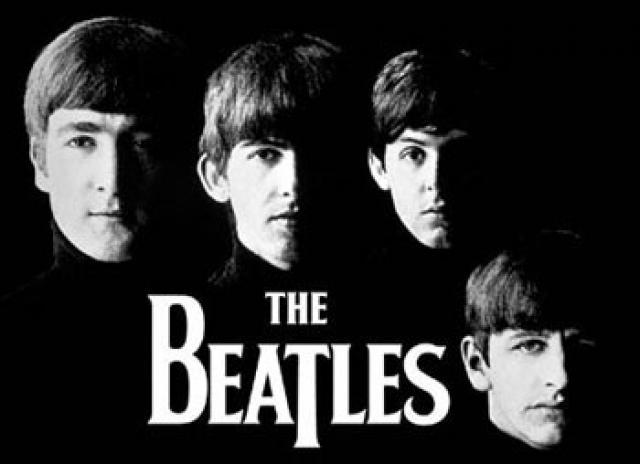From 1964 to 1970 the Beatles had 20 number one singles in
the United States. Following their appearance on the Ed Sullivan show in
February of 64' they took America by storm. They had two great song writers
in Paul McCartney and John Lennon (George Harrison was no slouch, either),
great vocal harmonies, strong instrumental skills, and the ability to change
their sound as time went on. They began as the Quarrymen in Liverpool back
in the late 1950s. At that time, they covered American rhythm and blues
numbers like so many other British bands. Their first original record was "Love Me Do," released in 1962. The following year, their first album
Please Please Me, reached #1 in the UK.

In 1965 they began to
change direction with their album Rubber Soul. It featured
exotic instruments such as the sitar and sometimes cryptic lyrics (listen to
"Norwegian Wood," for example). Around this time they were experimenting with
psychotropic drugs and were also introduced to Eastern religion. They
studied meditation with the Maharishi Mahesh Yogi in India. Tiring of
touring and performing, they made their last concert appearance in San
Francisco in 1966 and focused their energies on studio recording. The albums
from Revolver (1966) onward were increasingly daring and innovative.
The final track on Revolver, "Tomorrow Never Knows," is a good
example. McCartney had been listening to contemporary classical music by
composers such as Karlheinz Stockhausen and as a result he began
experimenting with tape loops. The bird-like sounds at the beginning of the
track are an example of electronic manipulation of sound. The track again
features an Indian instrument, in this case the tamboura. The lyrics for the
track are from The Tibetan Book of the Dead.
To understand how critical the partnership between Lennon and McCartney
was you need only listen to "A Day in the Life", the last track on Sgt.
Pepper's Lonely Hearts Club Band (1967). It begins with an ominous
sounding section section written by Lennon. Following Lennon's lyrics there
is an amazing crescendo achieved by having every instrument in an orchestra
start at its lowest note and work up to its highest note while gradually
getting louder and louder. An alarm clock signals the next section, written
by McCartney. It is livelier and not nearly as dark as the opening. The
difference in character of the sections written by Lennon and Mccartney
reflect the differences in their personalities.
John
Lennon married Yoko Ono in 1969---their relationship strained the Beatles
and helped lead to the group's dissolution in 1970. Their final album,
Let It Be was released in the same year.
